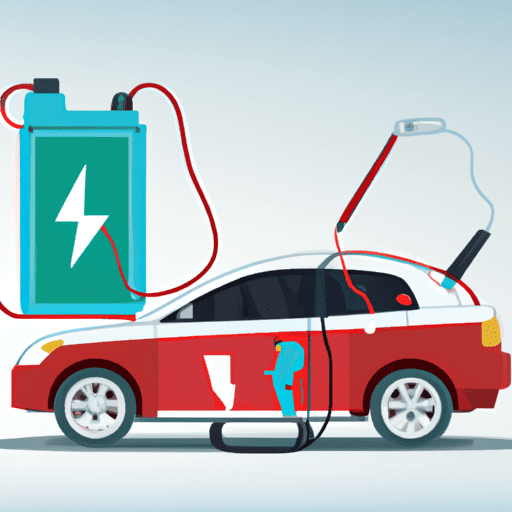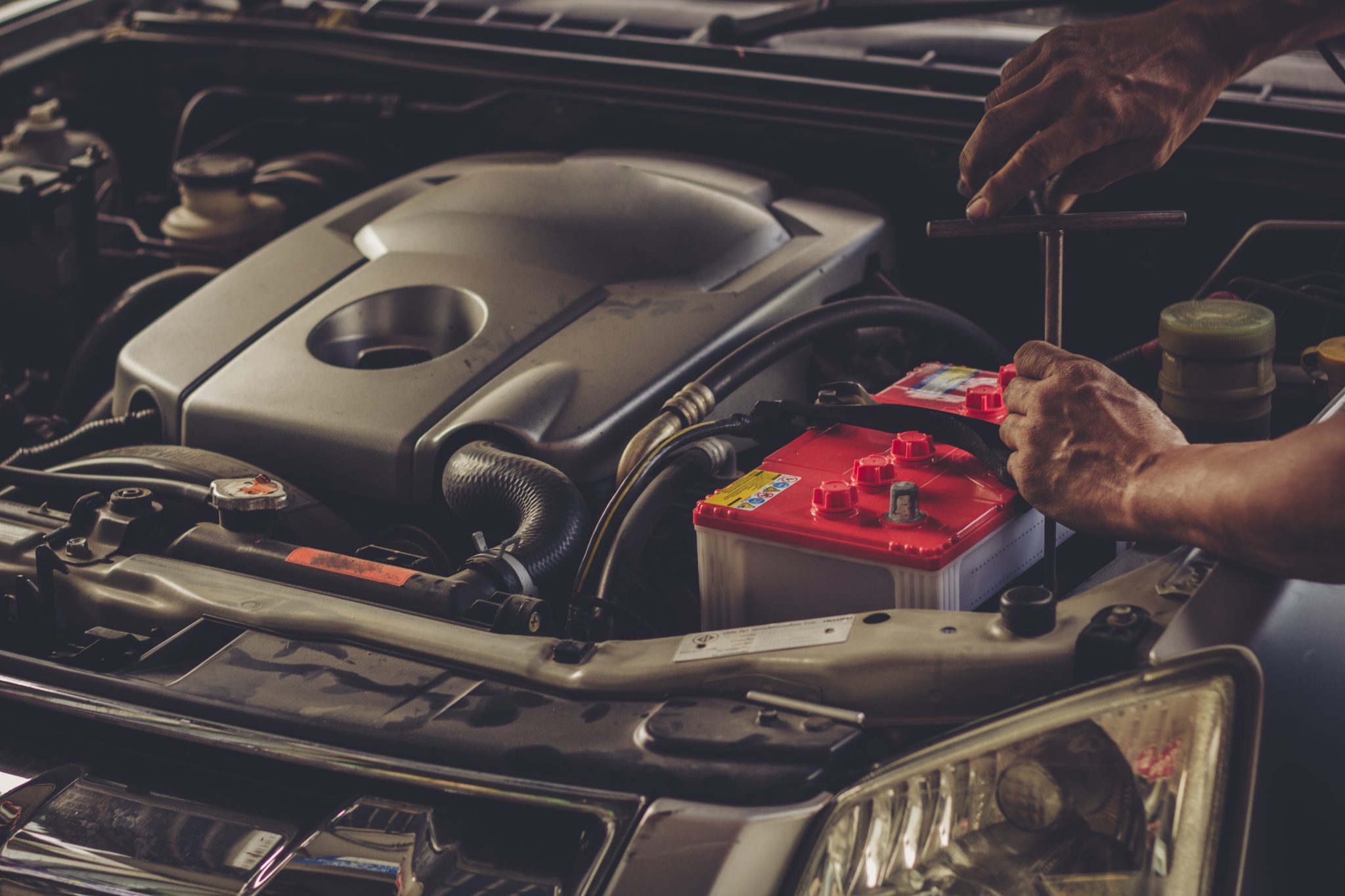
-
Table of Contents
“Recharge your car battery and get back on the road!”
Introduction
Recharging a car battery is an important part of car maintenance. It can help to extend the life of your battery and ensure that your car starts reliably. In this guide, we will discuss the steps you need to take to recharge your car battery safely and effectively. We will also discuss some tips for maintaining your battery and avoiding common problems.
How to Recharge a Car Battery with a Battery Charger
Recharging a car battery with a battery charger is a relatively simple process that can be done in a few steps. It is important to ensure that the battery charger is compatible with the car battery and that all safety precautions are taken.
Step 1: Make sure the car is turned off and the parking brake is engaged. Disconnect the negative cable from the battery first, followed by the positive cable.
Step 2: Connect the positive cable of the battery charger to the positive terminal of the car battery. Then, connect the negative cable of the battery charger to the negative terminal of the car battery.
Step 3: Set the battery charger to the appropriate voltage for your car battery. Refer to your car’s manual or the label on the battery for this information.
Step 4: Turn on the battery charger and allow it to charge the car battery for several hours. Monitor the charging process periodically to ensure that it is working properly.
Step 5: Once the car battery has been fully charged, turn off the battery charger and disconnect it from the car battery. Reconnect the negative cable to the car battery first, followed by the positive cable.
It is important to note that overcharging a car battery can cause damage to it, so it is important to monitor the charging process and turn off the charger when it is complete. Additionally, if you are unsure about any of these steps, it is best to consult a professional for assistance.
How to Recharge a Car Battery with Jump Leads
Jump starting a car battery is a relatively simple process that can be done with the help of another vehicle and a set of jump leads. It is important to take safety precautions when jump starting a car battery, as it involves working with electricity.
Step 1: Prepare the Vehicles
Park the two vehicles close together, but make sure they do not touch. Turn off all electrical components in both vehicles, including lights, air conditioning, and radios.
Step 2: Connect the Jump Leads
Connect one end of the red jump lead to the positive terminal of the dead battery. Connect the other end of the red jump lead to the positive terminal of the working battery. Connect one end of the black jump lead to the negative terminal of the working battery. Connect the other end of the black jump lead to an unpainted metal surface on the dead vehicle, such as a bolt or bracket.
Step 3: Start the Working Vehicle
Start the working vehicle and let it run for a few minutes. This will allow the battery to charge.
Step 4: Start the Dead Vehicle
Try to start the dead vehicle. If it does not start, wait a few minutes and try again. If it still does not start, check the connections and try again.
Step 5: Disconnect the Jump Leads
Once the dead vehicle has started, turn off both vehicles and disconnect the jump leads in reverse order. First, disconnect the black jump lead from the unpainted metal surface on the dead vehicle. Then, disconnect the black jump lead from the negative terminal of the working battery. Finally, disconnect the red jump lead from the positive terminal of the working battery and then from the positive terminal of the dead battery.
It is important to note that jump starting a car battery is only a temporary solution and should not be used as a long-term fix. If your car battery continues to die, it may need to be replaced.
How to Recharge a Car Battery with Solar Power
Solar power is an increasingly popular way to recharge a car battery. It is a clean, renewable energy source that can be used to power many different types of vehicles. Recharging a car battery with solar power is relatively simple and can be done in a few steps.
First, you will need to purchase a solar panel kit that is designed for recharging car batteries. These kits typically include a solar panel, a charge controller, and all the necessary wiring and connectors. Once you have the kit, you will need to mount the solar panel on your vehicle. This can be done by attaching it to the roof or hood of the car, or by using a mounting bracket.
Next, you will need to connect the solar panel to the charge controller. This is done by connecting the positive and negative terminals of the solar panel to the corresponding terminals on the charge controller. Once this is done, you will need to connect the charge controller to the car battery. This is done by connecting the positive and negative terminals of the charge controller to the corresponding terminals on the car battery.
Finally, you will need to turn on the charge controller and allow it to begin charging the car battery. Depending on the size of your solar panel and the size of your car battery, it may take several hours for the battery to fully recharge. Once it is fully charged, you can turn off the charge controller and disconnect it from the car battery.
Recharging a car battery with solar power is an easy and cost-effective way to keep your vehicle running smoothly. With a few simple steps, you can ensure that your car battery is always ready to go when you need it.
How to Diagnose and Fix a Dead Car Battery
Diagnosing and fixing a dead car battery can be a daunting task, but with the right knowledge and tools, it can be done quickly and easily. In this article, we will discuss how to diagnose and fix a dead car battery.
First, you will need to determine if the battery is actually dead. To do this, you will need to check the voltage of the battery using a multimeter. If the voltage is below 12 volts, then the battery is dead and needs to be replaced.
Once you have determined that the battery is dead, you will need to remove it from the vehicle. This can be done by disconnecting the negative and positive terminals from the battery and then removing the mounting bolts. Once the battery is removed, you will need to take it to an auto parts store for recycling or disposal.
Next, you will need to install a new battery. Make sure to use the same type of battery as the one that was removed. Connect the positive and negative terminals to the new battery and then secure it in place with the mounting bolts.
Finally, you will need to charge the new battery. This can be done by connecting a charger to the battery terminals and allowing it to charge for several hours. Once the battery is fully charged, it should be ready to use.
By following these steps, you should be able to diagnose and fix a dead car battery quickly and easily. Remember to always wear safety glasses when working on a car battery and never attempt to jump start a dead battery.
Tips for Maintaining Your Car Battery and Avoiding Recharging
1. Keep the Battery Clean: Dirt and corrosion can build up on the battery terminals, preventing a good connection between the battery and the car. Clean the terminals with a wire brush and baking soda solution to ensure a good connection.
2. Check the Battery Cables: Make sure the battery cables are in good condition and securely connected to the battery terminals. If they are loose or corroded, replace them.
3. Avoid Extreme Temperatures: Extreme temperatures can cause the battery to lose its charge faster. Park your car in a cool, shaded area when possible.
4. Drive Regularly: Driving your car regularly helps keep the battery charged. If you don’t drive your car often, consider investing in a trickle charger to keep the battery topped off.
5. Monitor Battery Voltage: Use a voltmeter to check the voltage of your battery periodically. If it is below 12 volts, it may need to be recharged or replaced.
6. Check the Alternator: The alternator is responsible for keeping the battery charged while the engine is running. Have it checked regularly to make sure it is functioning properly.
7. Avoid Short Trips: Short trips can prevent the battery from fully charging, so try to combine errands into one longer trip whenever possible.
Conclusion
Recharging a car battery is a relatively simple process that can be done at home with the right tools and knowledge. It is important to remember to always wear protective gear when handling a car battery, as it contains hazardous chemicals. Additionally, it is important to ensure that the battery is properly charged and maintained in order to keep it running efficiently. With the right tools and knowledge, recharging a car battery can be a straightforward and safe process.



